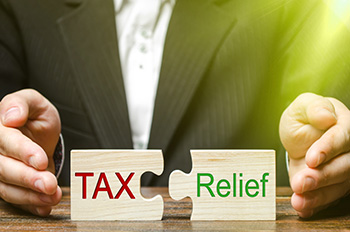
On March 18, President Trump signed into law a COVID-19 relief bill. It’s called the Families First Coronavirus Response Act. The new law mandates paid leave benefits for small business employees affected by the COVID-19 emergency and establishes related tax credits and Social Security and Medicare (FICA) tax relief for their employers.
Tax credits for emergency leave payments to employees. The new law grants tax credits to small employers to cover payments to eligible employees while they take time off under the mandatory emergency COVID-19 paid sick leave and paid family leave provisions. These provisions apply to employers with less than 500 employees.
Emergency paid sick leave under the new law is limited to $511 per day for up to 10 days (up to $5,110 in total) for an employee who’s in COVID-19 quarantine or seeking a COVID-19 diagnosis. An employee can also receive emergency COVID-19 paid sick leave of up to $200 per day for up to 10 days (up to $2,000 in total) to care for a child whose school or childcare location has been closed or whose childcare is unavailable due to COVID-19.
In addition, the law gives an employee the right to take up to 12 weeks of job-protected family leave if the employee or a family member is in COVID-19 quarantine or if the school or childcare location of the employee’s child is closed due to the outbreak. The employer must pay at least two-thirds of the employee’s usual pay, up to a maximum of $200 per day, subject to an overall maximum of $10,000 in total family leave payments.
To help employers cover these now-mandatory emergency leave payments, the law allows a refundable tax credit equal to 100% of qualified sick leave wages and family and medical leave wages paid by the employer.
The credit applies only to eligible leave payments made during the period beginning on a date specified by Treasury Secretary Mnuchin and ending on December 31, 2020. The beginning date will be within 15 days of March 18, 2020.
The new law increases the credit to cover a portion of an employer’s qualified health plan expenses that are allocable to emergency sick leave wages and emergency family leave wages.
The credit is first used to offset the Social Security tax component of the employer’s FICA tax bill. Any excess credit is refundable, meaning the government will issue a check to the employer for the excess.
Important: The credit isn’t available to employers that are already receiving the pre-existing credit for paid family and medical leave under Internal Revenue Code Section 45S.
Employer FICA tax relief. Qualified sick leave and family leave payments mandated by the new law are exempt from the 6.2% Social Security tax component of the employer FICA tax on wages. Employers must pay the 1.45% Medicare tax component of the FICA tax on qualified sick leave and family leave payments, but they can claim a credit for that outlay.
Credits for self-employed people. For a self-employed individual who’s affected by the COVID-19 emergency, the new law allows a comparable refundable credit against the individual’s federal income tax bill. If the credit exceeds the individual’s federal income tax bill (including the self-employment tax), the excess will be refunded via a check from the government. The credit equals:
- 100% of the self-employed person’s sick-leave equivalent amount, or
- 67% of the person’s sick-leave equivalent amount for taking care of a sick family member or taking care of the individual’s child following the closing of the child’s school or childcare location.
The sick-leave equivalent amount equals the lesser of:
- The individual’s average daily self-employment (SE) income, or
- $511 per day for up to 10 days (up to $5,110 in total) to care for the individual or $200 per day for up to 10 days (up to $2,000 in total) to care for a sick family member or a child following the closing of the child’s school or childcare location.
In addition, a self-employed individual could receive a family leave credit for up to 50 days. The credit amount would equal the number of leave days multiplied by the lesser of:
- $200, or
- The individual’s average daily SE income.
The maximum total family leave credit would be $10,000 (50 days x $200 per day).
Credits for self-employed individuals are only allowed for days during the period beginning on a date specified by Treasury Secretary Mnuchin and ending on December 31, 2020. The beginning date will be within 15 days of March 18, 2020.
Important: To properly claim the credit, self-employed individuals must maintain whatever documentation the IRS requires in future guidance. Contact your tax professional for details.
We Are Here to Help
This article only covers some of the COVID-19-related tax changes that have already been finalized. Other types of non-tax federal relief have also been made available and many states have announced their own COVID-19 relief. Please contact us if you have questions about these updates and how they may affect your personal and/or business situation.




